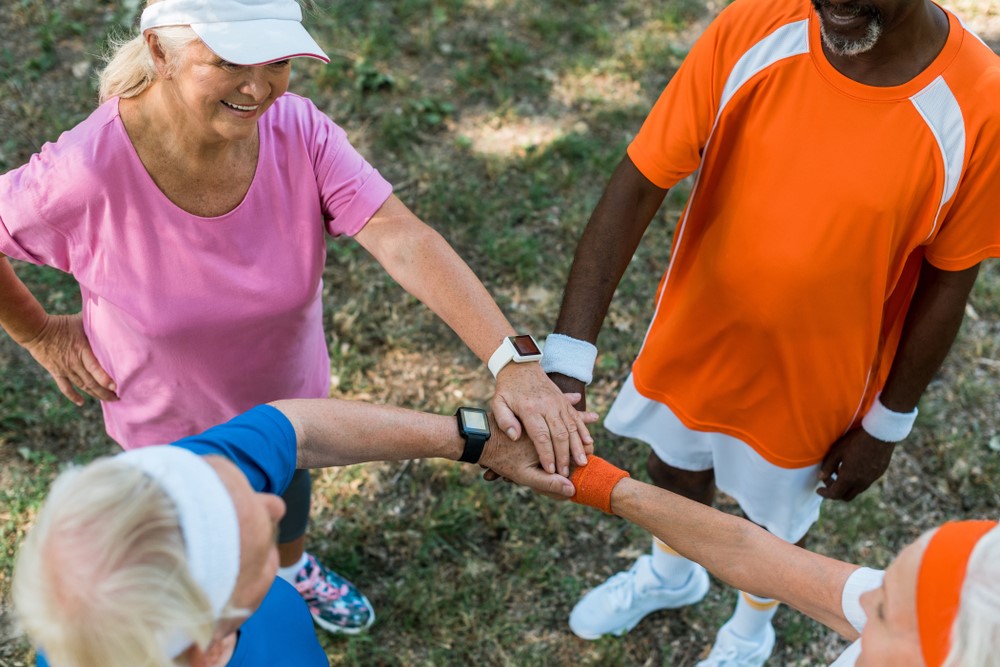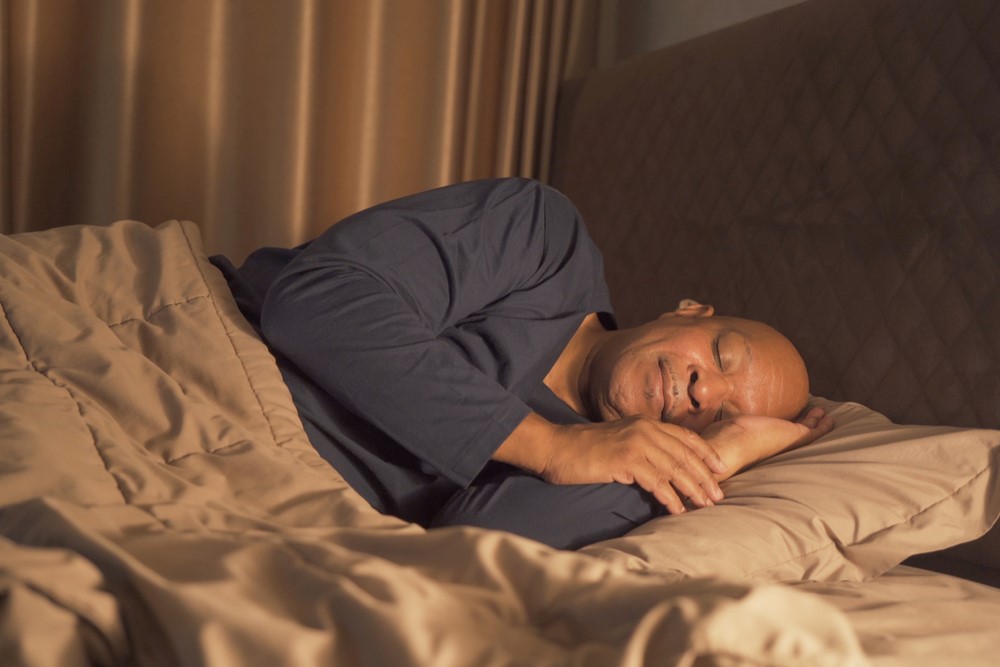
When most people think about technology and wearable devices, words like modern, trendy, and current come to mind. While our society tends to find the older population at odds with technology, it’s the generation that can possibly benefit the most from wearable tech.
Here are some of the amazing health benefits of wearable devices for seniors and ways they can take advantage of them.
What Are Wearable Devices Anyway?
Before we get too far, let’s talk about the idea of wearable devices for seniors. The term is a bit vague, so what does it actually mean?
Most of the time, wearable devices are technology that you’re wearing in some way. No surprises, right? A fitness tracker (like a Fitbit) or a smartwatch are the most common style, but you can find jewelry-based devices, web-enabled glasses, and even products that get embedded into your clothing.
Many such devices are designed to improve your health, often by tracking information like your heart rate, the number of steps you take, and even looking at your sleep patterns.
There are also less health-focused items, like virtual reality headsets, Bluetooth headphones, and web-enabled glasses. Such devices don’t provide all of the benefits that we’re talking about today, but they’re still useful, especially for social connection and reducing stress.
Benefits of Wearable Devices for Seniors
- Promotes Movement
- Tracks Biomarkers
- Aids with Sleep Hygiene
- Creates Community
- Provides Treatment
- Schedules Reminders
- Creates Independence
- May Provide Health Insurance Savings
Promotes Movement

Irish playwright George Bernard Shaw famously intoned that we don’t stop playing because we grow old; we grow old because we stop playing. Promoting movement is integral for longevity and quality of life, especially as we age. It’s recommended that adults engage in 150 minutes of physical activity per week, with 75 minutes being dedicated to vigorous exercise or cardiovascular training.
Cardiovascular training can help aging adults combat a slowing metabolism and contribute to a diminished risk of cardiovascular diseases, heart attacks, and strokes. Adding resistance training can also help dramatically reduce sarcopenia— age-related muscle loss— and improve bone density, which decreases with age.
In their simplest forms, many wearable devices promote more movement and exercise which can be vital for aging adults. This added motivation and tracking, along with access to other programming, can help motivate aging adults to stay active. Adults who face challenges enrolling in a structured exercise program will also have the opportunity to incorporate movement into their daily routines without worrying about gym access or special training.
Wearable technology also offers gamification, making everyday activities more fun. A senior who goes for walks every day might enjoy the step challenges and virtual tours that many wearable fitness devices offer. This added encouragement can make daily exercise more fun.
Tracks Biomarkers
Another significant benefit of wearable devices is that they track important biomarkers and health data. This feature is especially beneficial for aging adults who have advanced care needs. Capturing these metrics for a healthcare professional can help improve diagnostic timelines and treatment efficacy.
Important biomarkers to capture include:
- Active minutes
- Blood pressure
- Heart rate
- Sleep patterns
Seniors can provide this data to their doctors to help advocate for themselves while improving their quality of care. For seniors who don’t have a family member to advocate for them, this can be a huge relief. This diagnostic data can also help should any health issues arise.
Aids with Sleep Hygiene

There’s a common myth that senior citizens require less sleep than younger individuals. This misconception is derived from the fact that many people experience more sleep issues as they age. While those affected are able to function on less sleep, they’re not operating at an optimal level.
As we age, we require more time to heal, which occurs mostly during periods of rest. Furthermore, sleep deprivation plays a pivotal role in cognition and coordination— in other words, preventing mental decline and falls. Seniors, like any adult, should aim for 7-9 hours of sleep per night.
Fortunately, wearable devices can help seniors improve their sleep hygiene. As mentioned above, basic wearables track biometrics that provide insights into sleep patterns. This data can help individuals and medical practitioners determine where disruptions are occurring to make a corrective action plan.
More advanced wearable devices can actually help individuals build a better bedtime routine by emitting signals notifying the body that it’s time for rest. Quality sleep has been proven time and time again to impact our hormones, metabolism, health, disease prevention, cognitive abilities, immunity, and overall longevity. Using wearables to improve sleep hygiene could add years to one’s life.
Creates Community
In our digitally-driven world, it’s easy to feel too connected. Unfortunately, many seniors start to feel isolated as they age. Yet, social connection is paramount for healthy aging and a longer lifespan.
Wearable devices can help create a sense of community and connect seniors with friends and family at all times. Smartwatches can keep the wearer informed without having to navigate a smartphone. Messages are delivered and can be returned with voice-to-text to keep conversations moving.
Many fitness wearables also have community components, allowing seniors to create step challenges with friends, set goals, and connect over successes.
In many ways, wearable devices improve communication and access to one another, and seniors are more open to this type of communication than ever before. 44% of seniors participating in an AARP study admitted to viewing technology more positively for communication since before the COVID-19 pandemic.
Provides Treatment

Wearables aren’t just for tracking metrics and encouraging movement; some even provide medical treatment. In addition to the technology that replicates signals to the body, some wearables also provide injections of important medication.
While implanted medical devices are nothing new, these innovations are more lightweight, affordable, and accessible than ever before, improving treatment access for seniors with conditions like diabetes.
This technology goes hand-in-hand with the recent shift to telemedicine and “care in place” for seniors.
Schedules Reminders
Setting the alarm on one’s phone as a reminder for something is nothing new. However, we used to be limited to alarm clocks and watches.
The problem with the former is that they’re largely stationary— you aren’t going to take your alarm clock to the store. The problem with the latter is that they’re effective at telling you to remember something while on the go, but not what to remember.
Many seniors are faced with taking numerous medications and vitamins throughout the day, which can be confusing or overwhelming.
Wearable tech can provide reminders with context and customizable schedules. These devices are great for ensuring seniors know what’s happening in their schedule or what medicine should be taken, especially when experiencing memory issues.
Creates Independence
One of the biggest struggles seniors face is a loss of independence. This shift in familial relationships can create tension as a parent becomes more dependent on a child. Those facing fall risks or trying to maintain their hobbies without interference can benefit from having the option of constant contact.
Life Alert systems have been around for a while, but innovations in wearable technology have made them more accessible and functional. Many wearables can be programmed to detect falls or heart rhythm disruptions, sending notifications when needed.
Having a smartwatch or wearable communication device can also help seniors seek immediate assistance should an emergency occur.
May Provide Health Insurance Savings
Healthcare insurance providers are also embracing the benefits of wearable technology. As insurance algorithms are highly dependent on biomarkers and predictors, having more in-depth data can help them personalize insurance packages.
Many insurance providers are offering discounts to seniors who use wearables and share data from them, as well as rebates for proven movement, sleep patterns, etc.
Of course, there’s a caveat to this benefit: wearables also track signs of decline. If your insurance provider offers this potential savings benefit, be sure to read the fine print and determine what occurs if the data changes unfavorably. It stands to reason that if an insurance provider is willing to offer a discount for access to data, it benefits their bottom line in some way.
Final Thoughts
Even the simplest wearable devices can enrich a senior’s quality of life, providing encouragement, community, connection, and movement. If you’re considering a wearable device as a gift for a senior, take some time to explore and discuss the options with them. It’s normal for a senior to have some resistance to new technology, but that resistance has lessened since the pandemic. If your grandma can subscribe to Netflix to watch Tiger King before Facetiming about it, she can use a wearable device.


Leave a Reply